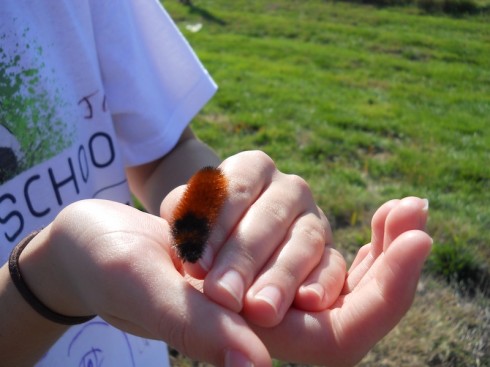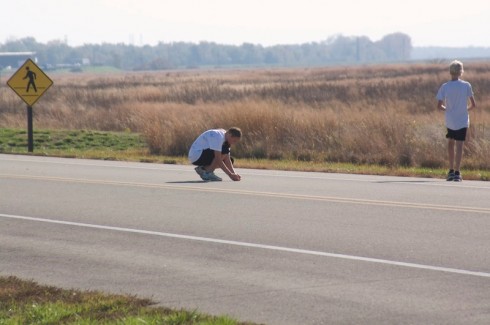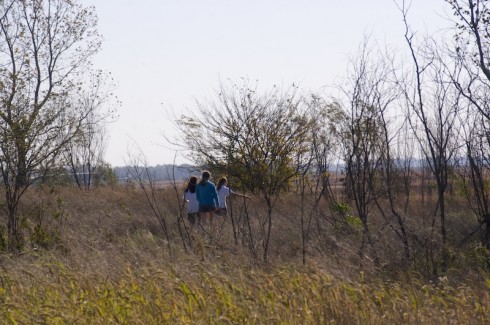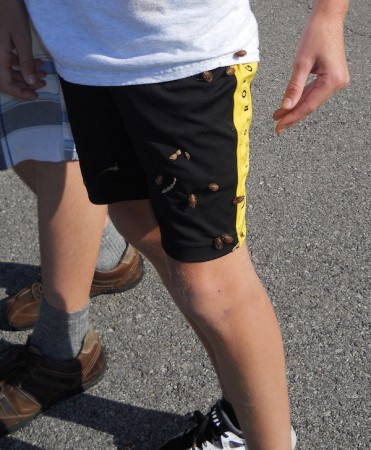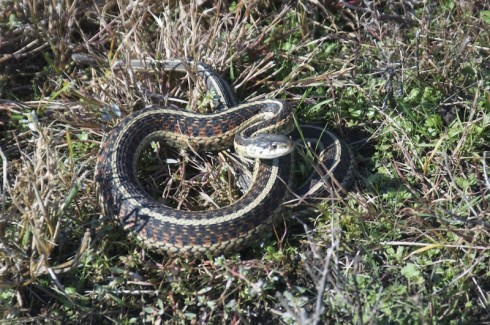
Despite choosing to traipse through the prairie while geocaching, my students’ only encounters with fauna were along and on the side of the road.
Now, I tend to be terrible at identifying animals, but only last week I ran into an eastern garter snake so I actually knew something about this meter-long specimen that was stepped on by one of my students while she was running back to the Audubon Center. I convinced the group to leave it alone since these snakes do bite — even though they’re not poisonous — and release a bad-smelling odor when threatened. And this guy was somewhat traumatized.
As for the student. She was somewhat traumatized too, but got over it soon enough. I think she was more put out by the fact that when she told her mom about it that night, her mom’s first response was, “That poor snake.”
